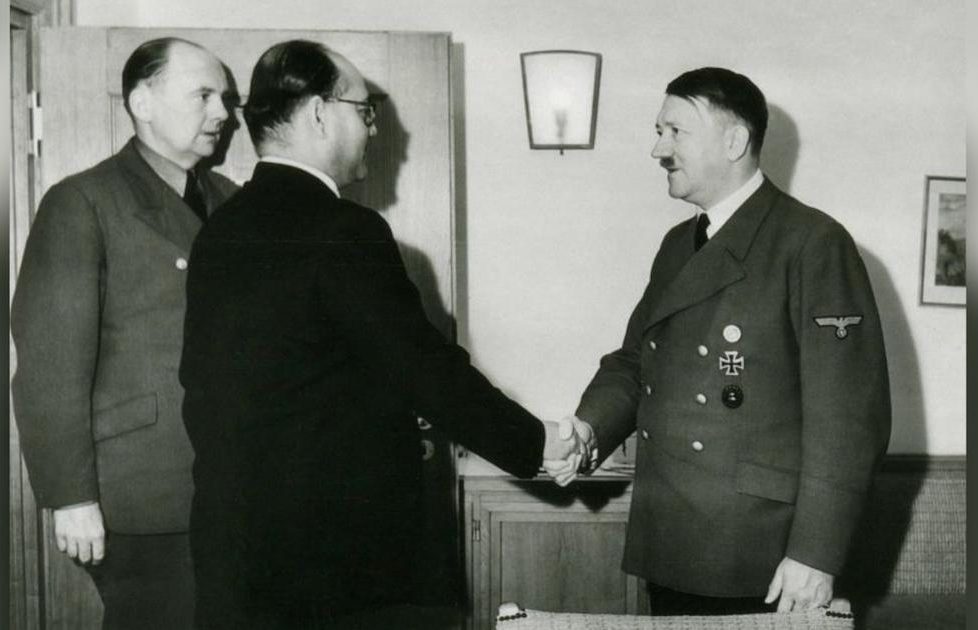World War-II stories – Only Netaji could dare to say this to Hitler….


Highlights
Netaji Subhash Chandra Bose and Adolf Hitler. Two such personalities without whose discussion the history of the modern world would be considered incomplete. Do you know if there was ever a meeting between Netaji and Hitler? If they met, what was the conversation? Did Netaji seek help from Hitler during the Second World War against British rule? For your information, let us tell you that Netaji had met Hitler only once in his life. This meeting took place on 29 May 1942. Let’s know the whole story of this meeting…
Hitler had put opinion on British rule in Mein Kampf
Hitler has written a book Mein Kampf. In this, Hitler had given an opinion regarding the British rule on India. Hitler wrote in the book that if India leaves the hands of the British, it will be a misfortune for the whole world. He is also among those who hold such opinion. He would rather see India under the rule of Britain than any other nation. When Netaji arrived to meet Hitler on 29 May 1942, German Foreign Minister J von Ribbentrop and interpreter Paul Schmidt were also present in this meeting.
Appeal to Hitler to clarify about opinion on India
Paul Schmidt, who was involved in this meeting between Netaji and Hitler as an interpreter, had shared the details of this meeting with Subhash Chandra Bose’s niece Krishna Bose. Schmidt told Krishna that Netaji had mentioned the anti-India reference of Mein Kampf to Hitler during the meeting. According to Schmidt, Netaji told Hitler that many things were being spread in Britain citing Mein Kampf. Also Britain is using it against Germany. Netaji told Hitler that he should clarify his opinion on India at the right time. Paul Schmidt had told Krishna Bose that Hitler did not give any assurance directly on this demand of Netaji, but definitely tried to avoid it.
Hitler advised Netaji to go to Japan by submarine,
even though Hitler did not say anything clearly, but only a few people like Netaji had the courage to talk to the biggest dictator of the world at that time. According to Paul Schmidt, Netaji thanked Hitler for the hospitality during the meeting. Another point of conversation was how to transport Netaji from Germany to Japan. Hitler was also in favor of sending Netaji safely to Japan as soon as possible. However, Hitler was against traveling by air. At that time the Second World War was going on and there was danger from the Airforce of the Allied countries (America, France, Britain) on the way. In such a situation, Hitler advised that Netaji should go to Japan by submarine. A German submarine was also immediately arranged.
Transfer to Japanese submarine, arrived 13 May 1943
Hitler himself made a map of the journey and the journey was to be completed in six weeks. On 9 February 1943, Netaji left the Kiel port of Germany aboard the U-180 submarine. Abid Hasan was also with him. The submarine’s commander on this trip was Werner Mussenberg. Sweden, then It entered the Indian Ocean via Norway and France, rounding the Cape of Good Hope in the last week of April. On the other hand, on 20 April 1943, a Japanese submarine I-29 came out of Penang. It was decided to transfer Netaji from German submarine to Japanese submarine in Madagascar. On the morning of 28 April 1943, Netaji and Abid Hasan were taken off the U-180 and made to sit in a rubber boat. This was the first time during World War II that passengers were transferred from one submarine to another. On 13 May 1943, the Japanese submarine reached Sabang on the northern coast of Sumatra. Netaji posed for photographs with the crew of this submarine. Along with giving autograph on the picture, Netaji wrote – I believe that this journey will prove to be a milestone in our fight for victory and peace.
DISCLAIMER: The author is solely responsible for the views expressed in this article. The author carries the responsibility for citing and/or licensing of images utilized within the text.
